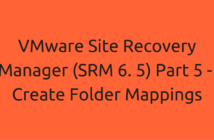VMware announces Cross-Cloud architecture geared towards improving software-defined data center (SDDC) and hybrid cloud deployments.
It is a new architecture that will help companies extend the company's current hybrid cloud strategy by more effectively allowing customers to run apps in multiple clouds, within a common environment.
This includes apps running in public clouds like Amazon Web Services (AWS) and Microsoft Azure.
The architecture "enables consistent deployment models, security policies, visibility, and governance for all applications, running on-premises and off, regardless of the underlying cloud, hardware platform or hypervisor," according to a VMware press release.
The important components of the Cross-Cloud architecture are the VMware Cloud Foundation platform and a new set of Cross-Cloud services.
VMware Cloud Foundation is VMware’s new unified Software-Defined Data Center (SDDC) platform for private and public clouds.
Cloud Foundation brings together VMware’s compute, storage, and network virtualization into a natively integrated stack, delivering enterprise-ready cloud infrastructure with unique automation and management capabilities for simplified operations that are consistent across private and public clouds.
In VMware's case, that means vSphere, VSAN, and NSX. The platform will be able to "support any kind of application," including traditional apps that run on VMs and cloud-native apps that rely on containers.
Image: VMware
VMware Cloud Foundation also comes with VMware SDDC Manager that automates the entire system lifecycle and simplifies software operations.
In addition, it can be further integrated with VMware vRealize Suite, VMware Horizon® and VMware Integrated OpenStack.
What is Unique?
Natively Integrated Software-defined Stack: VMware Cloud Foundation integrates compute, storage, and networking into a single layer of software, ensuring full interoperability of the entire software stack to deliver the easiest path to deploy a virtualized infrastructure for an SDDC.
Next Generation Hyper-convergence: VMware Cloud Foundation takes hyper-convergence to the next level by extending the convergence of computing, and storage by including network virtualization with VMware NSX. This allows for simpler network management and elastic scalability at data-center scale.
Run as a Service from the Public Cloud: VMware Cloud Foundation can be run as a service from leading cloud service providers, establishing a common operational model between private and public clouds, that leverages existing administration skill sets, tools, and processes.
Automated Lifecycle Management: VMware Cloud Foundation comes with VMware SDDC Manager that radically simplifies the day 0 to day 2 operations of the entire software stack, automating deployment, configuration, patching and upgrading processes.
Use Cases
Virtual Infrastructure: Leverage the high performance, availability, and scalability of VMware’s SDDC to run any mission critical application such as databases, Web apps, VDI, etc.
Virtual Desktop Infrastructure Provides the foundation to run virtual or remote desktop infrastructure and applications. If deployed with VMware Horizon, VMware Cloud Foundation will further extend the lifecycle automation of the software with the SDDC Manager.
Private Cloud: Deploy with a cloud management platform for full self-service capabilities to build a complete private cloud. If used in conjuncture with vRealize Suite, VMware Cloud Foundation will further extend the lifecycle automation of the software with the SDDC Manager.
Deployment Options
VMware Cloud Foundation software can be consumed in three ways:
- Ready Systems: Pre-qualified VSAN Ready Nodes and networking switches
- Integrated Systems: VMware Cloud Foundation software stack pre-installed and integrated on qualified hardware (e.g., VCE vXRack 1000 SDDC).
- As a Service from the Public Cloud: Run VMware Cloud Foundation as a service, managed by public cloud providers.
Source: VMware Cloud Foundation



